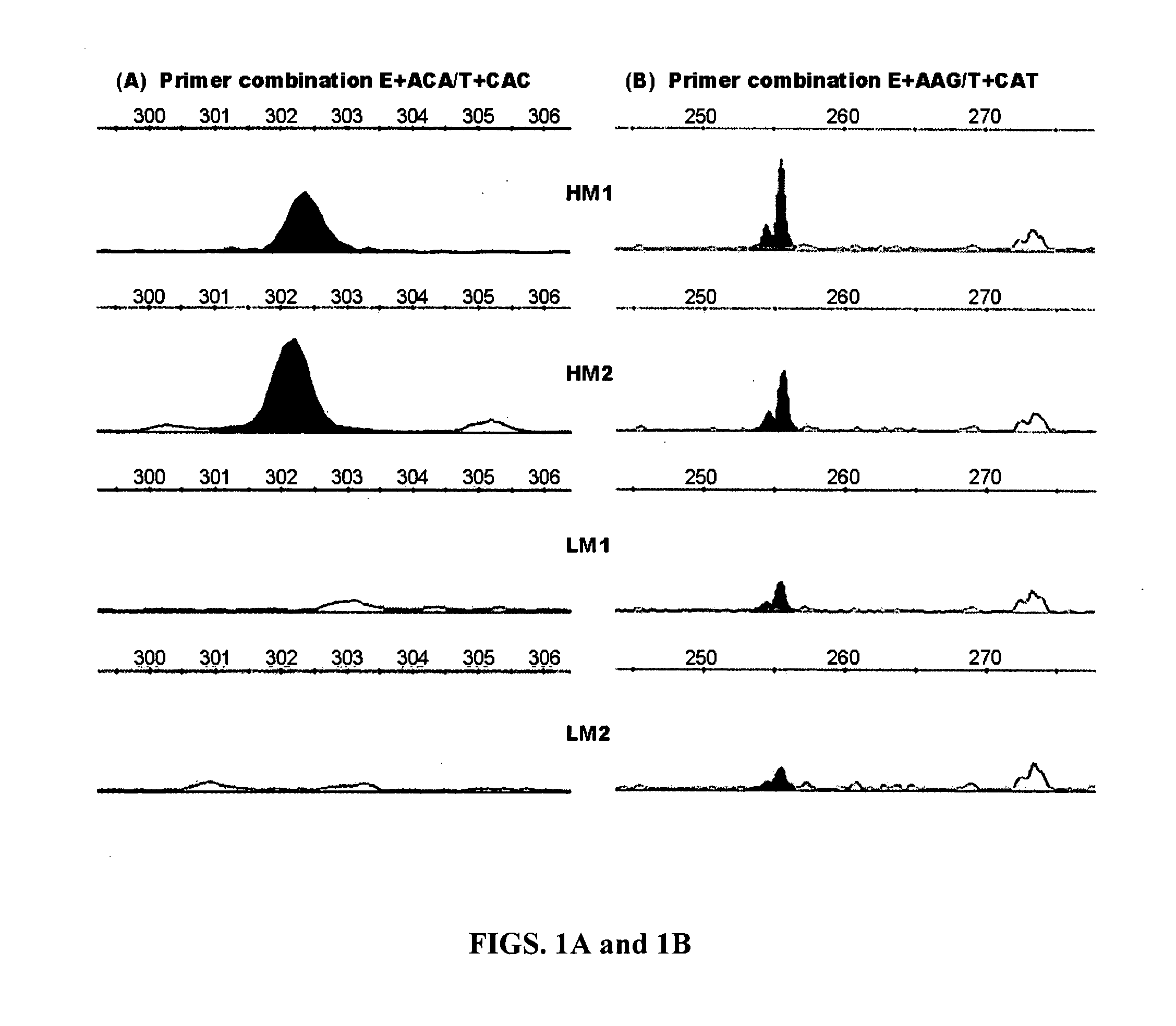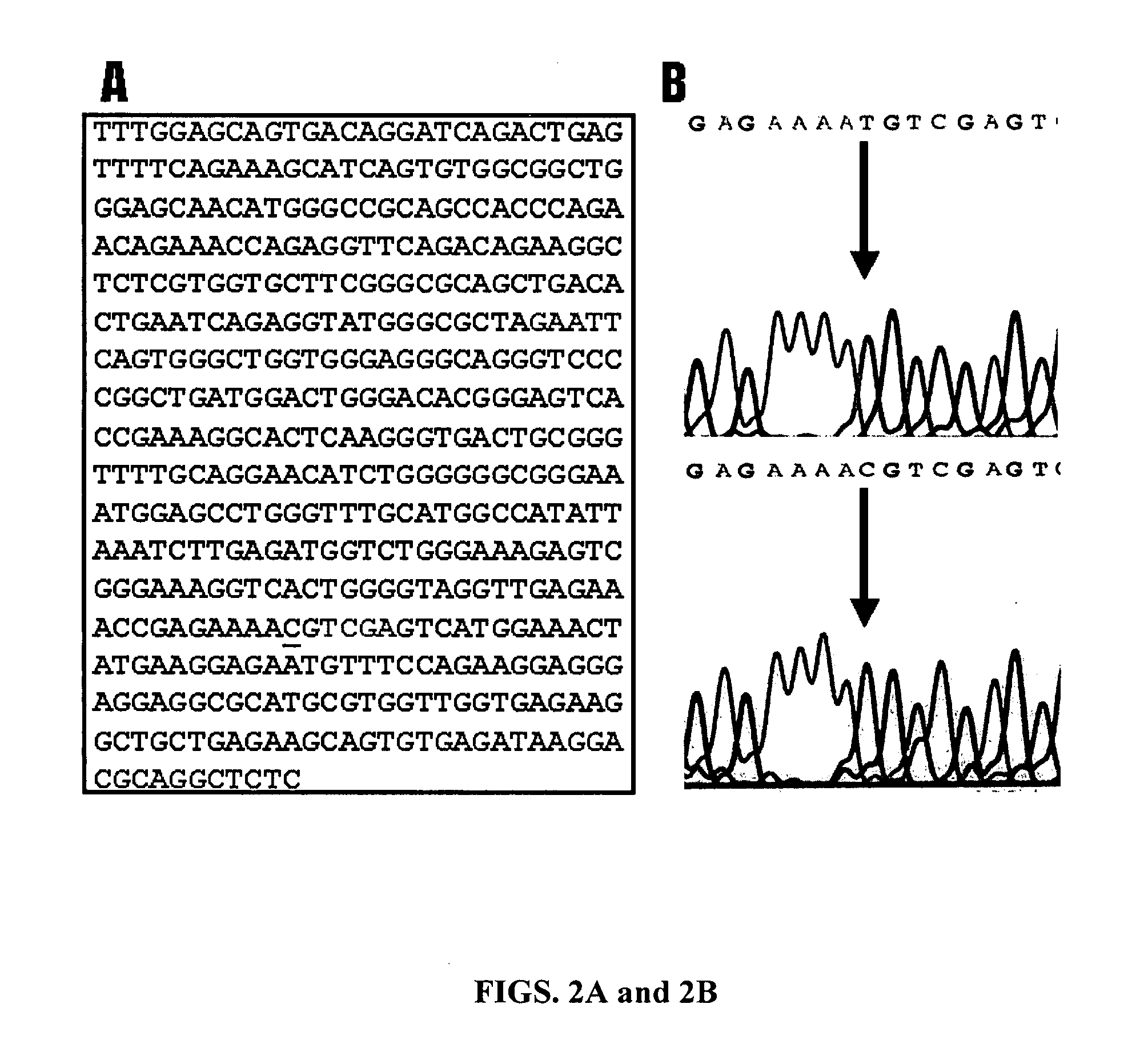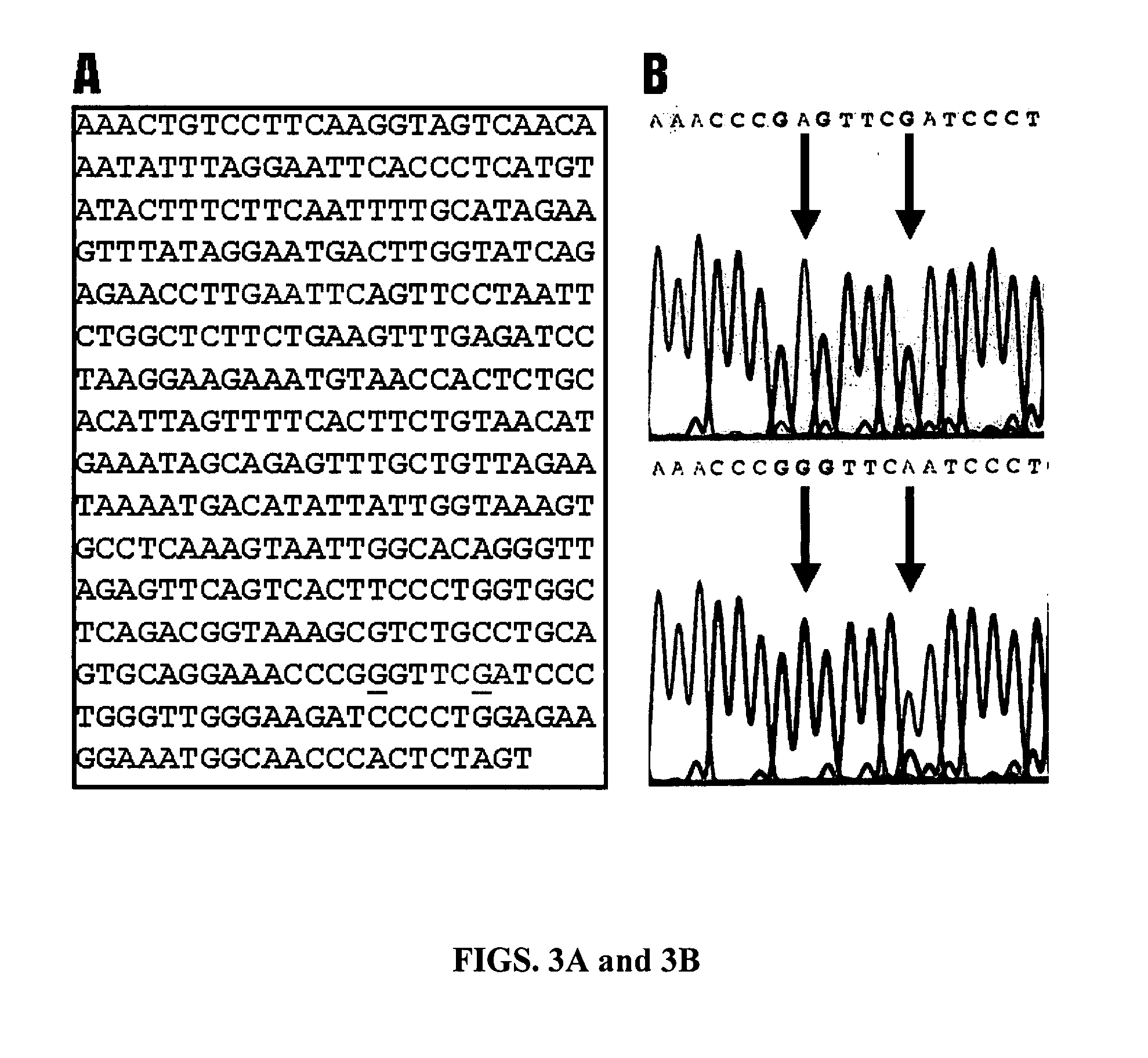Simplified QTL mapping approach for screening and mapping novel markers associated with beef marbling
a mapping and beef marbling technology, applied in the field of genomic scans of quantitative traits lo, can solve the problems of inability to move from mapped qtl to actual genes, low resolution of mapped qtl, and inability to detect real genes, so as to achieve simple, inexpensive qtl mapping, and reduce the number of samples
- Summary
- Abstract
- Description
- Claims
- Application Information
AI Technical Summary
Benefits of technology
Problems solved by technology
Method used
Image
Examples
example 1
[0172] Animals, marbling scores and genomic DNA. The animals used in the present study were F2 progeny derived from Wagyu x Limousin F1 sires and F1 dams at the Fort Keogh Livestock and Range Research Laboratory, ARS, USDA. The Wagyu breed of cattle has been selected for high marbling for a long time, whereas the Limousin breed has been selected for heavy muscle, which leads to a low marbling score. The difference in marbling scores between these two breeds makes them very unique for mapping QTL for this economically important trait in beef cattle. Development of the reference population has been described previously by Wu and colleagues (2005, Genetica 125, 103-113). Beef marbling score (BMS) was a subjective measure of the amount of intramuscular fat in the longissimus muscle based on USDA standards (http: / / www.ams.usda.gov / ). Subcutaneous fat depth (SFD) was measured at the 12-13th rib interface perpendicular to the outside surface at a point three-fourths the length of the longi...
example 2
[0188]FIG. 5 shows a flowchart of the input of data and the output of results from the analysis and correlation of the data pertaining to the breeding, veterinarian histories and performance requirements of a group of animals such as from bovines. The flowchart illustrated in FIG. 7 further indicates the interactive flow of data from the computer-assisted device to a body of students learning the use of the method of the invention and the correlation of such interactive data to present an output as a pie-chart indicating the progress of the class. The flowchart further indicates modifications of the method of the invention in accordance with the information received from the students to advance the teaching process or optimize the method to satisfy the needs of the students.
[0189]FIG. 6 illustrates potential relationships between the data elements to be entered into the system. Unidirectional arrows indicate, for example, that a barn is typically owned by only one farm, whereas a f...
PUM
 Login to View More
Login to View More Abstract
Description
Claims
Application Information
 Login to View More
Login to View More - R&D
- Intellectual Property
- Life Sciences
- Materials
- Tech Scout
- Unparalleled Data Quality
- Higher Quality Content
- 60% Fewer Hallucinations
Browse by: Latest US Patents, China's latest patents, Technical Efficacy Thesaurus, Application Domain, Technology Topic, Popular Technical Reports.
© 2025 PatSnap. All rights reserved.Legal|Privacy policy|Modern Slavery Act Transparency Statement|Sitemap|About US| Contact US: help@patsnap.com



